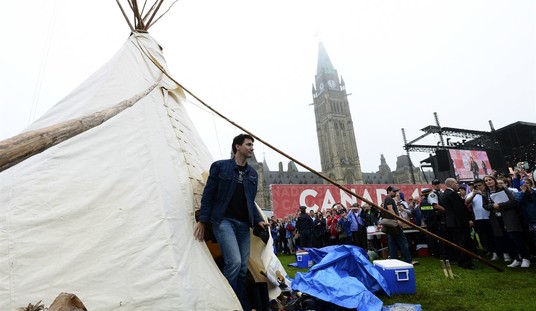With zero fanfare, a small flag-lowering ceremony was conducted in Kabul that marked the end of the war in Afghanistan.
As the military and political leadership continues to assure us that the Afghanistan army is up to the challenge of defending the country, the Taliban has continued to advance in several provinces while attacking targets of opportunity all across the country.
In front of a small, hand-picked audience at the headquarters of the NATO mission, the green-and-white flag of the International Security Assistance Force was ceremonially rolled up and sheathed, and the flag of the new international mission called Resolute Support was hoisted.
U.S. Gen. John Campbell, commander of ISAF, commemorated the 3,500 international soldiers killed on Afghan battlefields and praised the country’s army for giving him confidence that they are able to take on the fight alone.
“Resolute Support will serve as the bedrock of an enduring partnership” between NATO and Afghanistan, Campbell told an audience of Afghan and international military officers and officials, as well as diplomats and journalists.
“The road before us remains challenging, but we will triumph,” he added.
Beginning Jan. 1, the new mission will provide training and support for Afghanistan’s military, with the U.S. accounting for almost 11,000 of the 13,500 members of the residual force.
“Thanks to the extraordinary sacrifices of our men and women in uniform, our combat mission in Afghanistan is ending, and the longest war in American history is coming to a responsible conclusion,” U.S. President Barack Obama said in a statement issued in Hawaii, where he is on vacation with his family.
Afghan President Ashraf Ghani, who took office in September, signed bilateral security agreements with Washington and NATO allowing the ongoing military presence. The move has led to a spike in violence, with the Taliban claiming it as an excuse to step up operations aimed at destabilizing his government.
ISAF was set up after the U.S.-led invasion as an umbrella for the coalition of around 50 nations that provided troops and took responsibility for security across the country. It ends with 2,224 American soldiers killed, according to an Associated Press tally.
The mission, which was initially aimed at toppling the Taliban and rooting out al-Qaida following the Sept. 11, 2001 attacks, peaked at 140,000 troops in 2010. Obama ordered a surge to drive the insurgents out of strategically important regions, notably in the southern provinces of Helmand and Kandahar, where the Taliban had its capital from 1996 to 2001.
Taliban spokesman Zabihullah Mujahid called Sunday’s event a “defeat ceremony” and said the insurgents’ fight would continue.
No victory celebration, but that was inevitable once President Obama decided to withdraw. According to some experts, the Afghan army is hanging tough against the Taliban in many areas and the terrorists are finding it difficult to hang on to real estate:
“They are conducting attacks, but when it comes to holding territory they have not been able to [do] that successfully,” said Lisa Curtis, senior research fellow for Asian studies at the conservative-leaning Heritage Foundation. “The Afghan forces have been hanging in and have remained in control of large swathes of territory, but the Taliban’s continual attacks are contributing to a sense of instability across many regions and resulting in a lot of deaths.”
That circumstance is evident in the casualty rates among Afghan security forces: They have suffered more than 4,600 deaths in 2014 alone, surpassing the number of deaths sustained by the coalition since the war began in 2001, according to the Economist. In context, it’s a huge increase in the overall death toll, accounting for about one-third of the 13,000 Afghan security personnel killed in 13 years of war, based on figures reported by the New York Times.
This high death toll helped convince U.S. President Barack Obama to commit 1,000 extra troops above the 9,800 due to remain in the country past the date that will signal the end of combat operations in Afghanistan: Dec. 31. That will leave about 13,000 NATO troops in the country overall.
The military situation is challenging enough, but it’s political problems that may doom the Afghan government to extinction. Afghan President Ashraf Ghani’s government is plagued with factionalism and still lacks a cabinet months after the election. Ghani is forced to share power with Prime Minister Dr. Abdullah Abdullah who still appears to be scheming to take control. Of the power sharing agreement, one analyst says “It’s a recipe for disaster.” Otilie English, who worked in Kabul before the Taliban took over and after 9/11 also says, ““I really think the country is evolving back to conditions prior to the civil war in the 90’s in which Kabul was destroyed.”
Not words to cheer western allies who shed blood and spent treasure to try and prevent Afghanistan from once again becoming a safe haven for terrorists. The chances for a different outcome, where a free and independent Afghanistan heals itself and takes its place among the nations of the world unfortunately appear to be slim.
But America can be somewhat comforted with the idea that our military did everything that was asked of them and did it successfully. If anything untoward happens to the Afghanistan government — if the Taliban ends up in charge — the fault will lie with others, and not the men and women who sacrificed so much to get the job done.










Join the conversation as a VIP Member